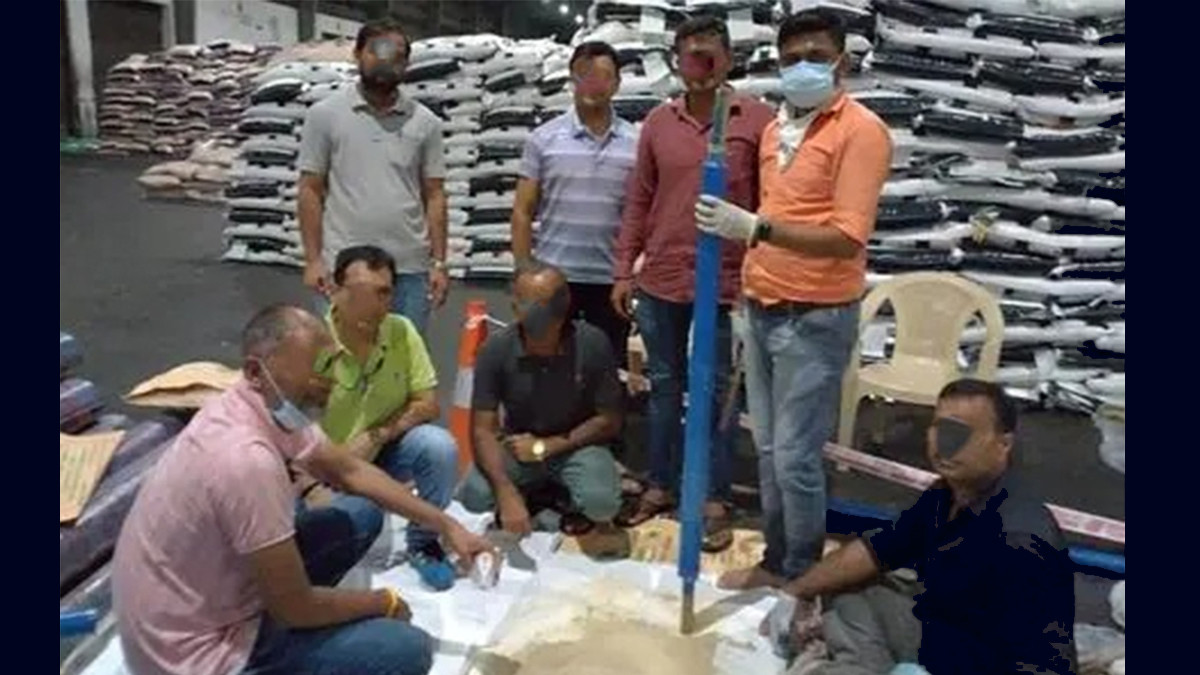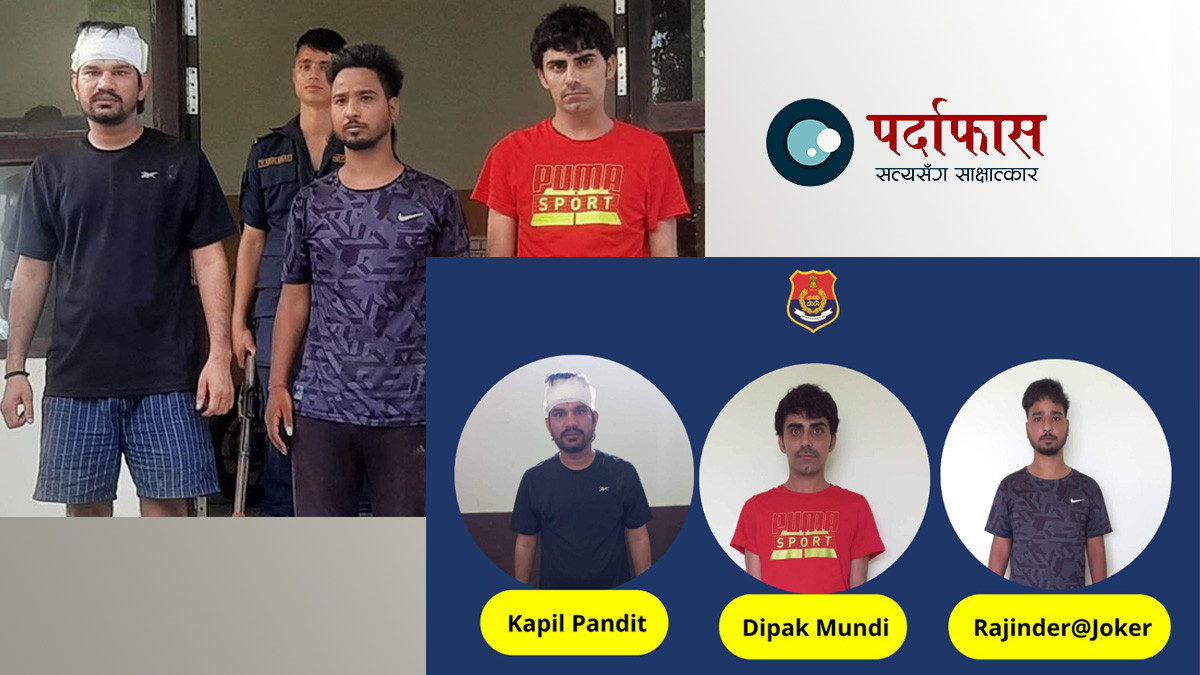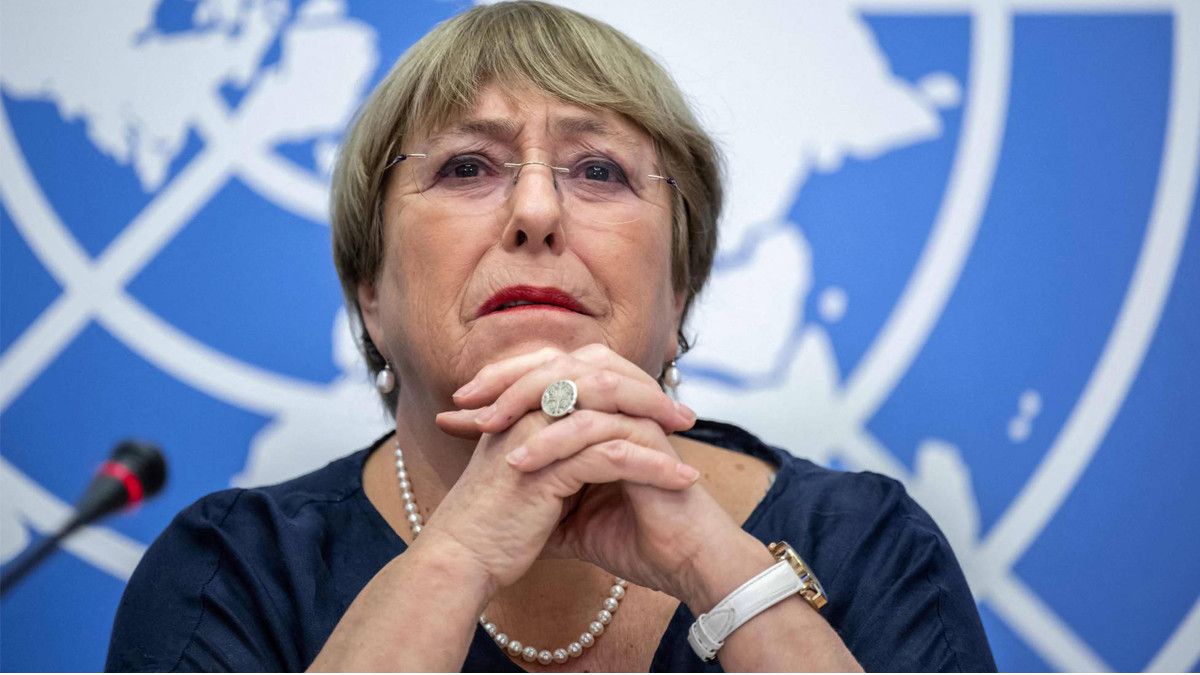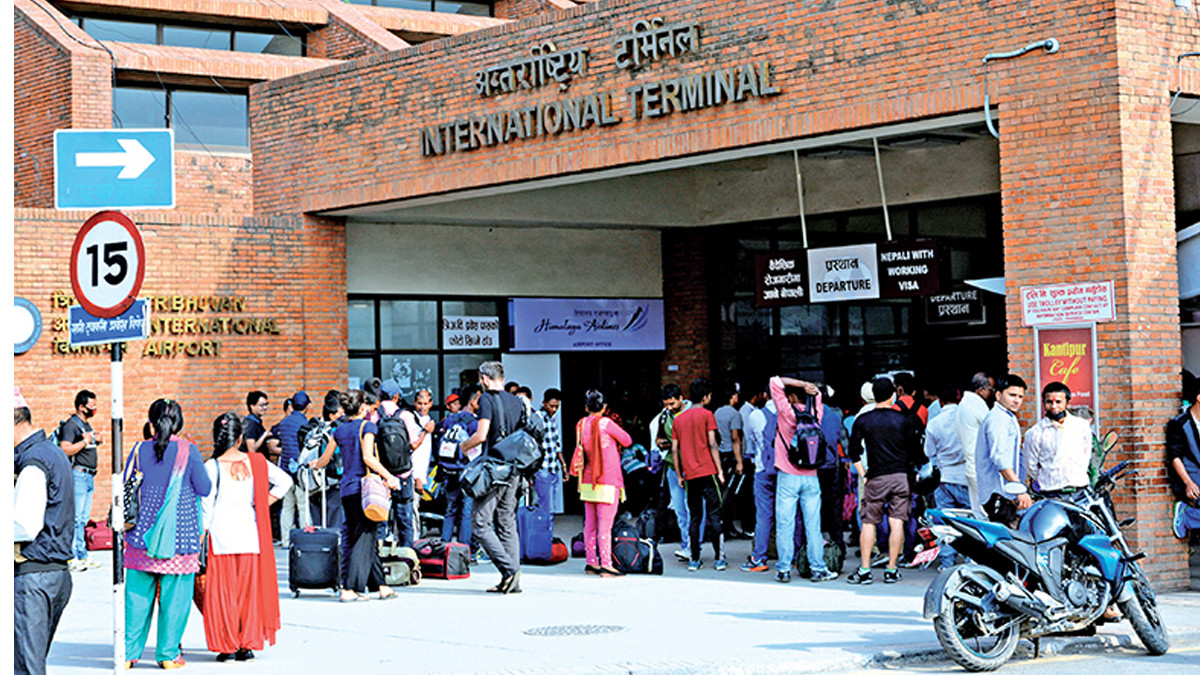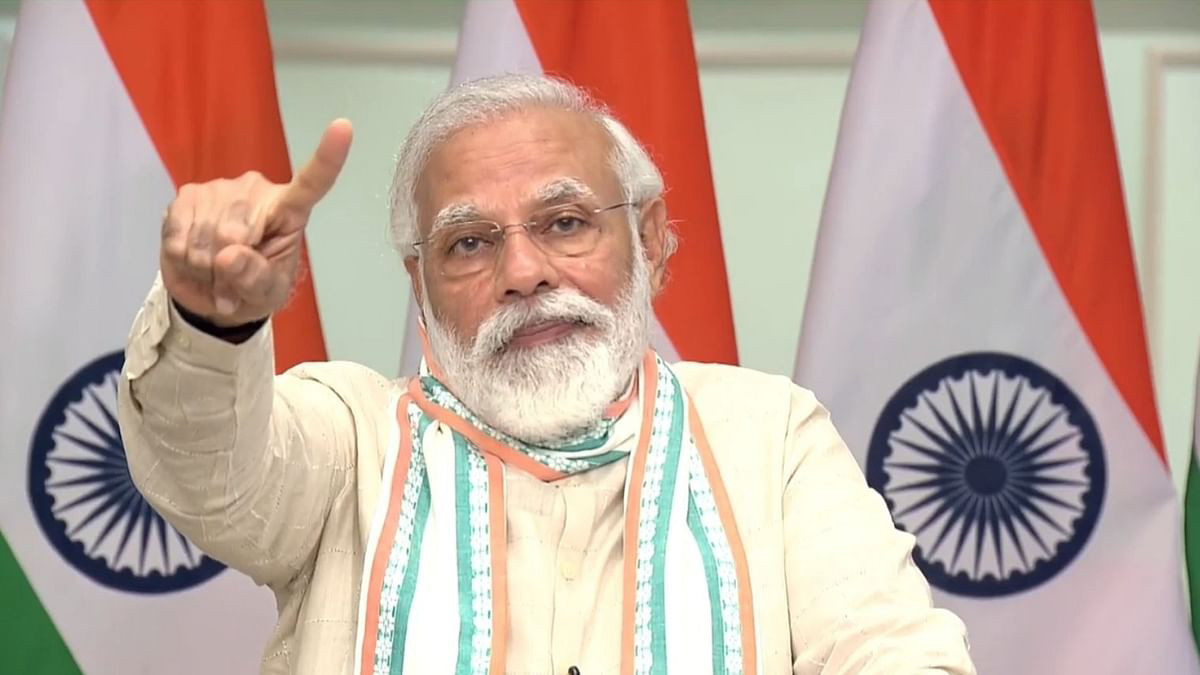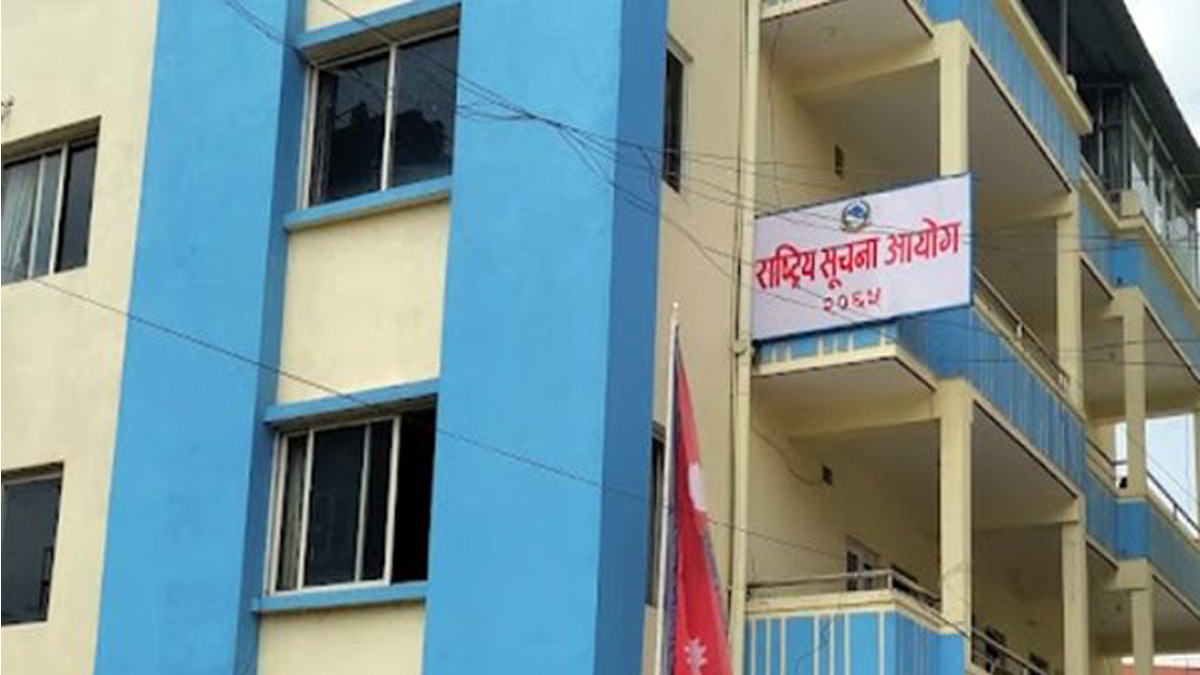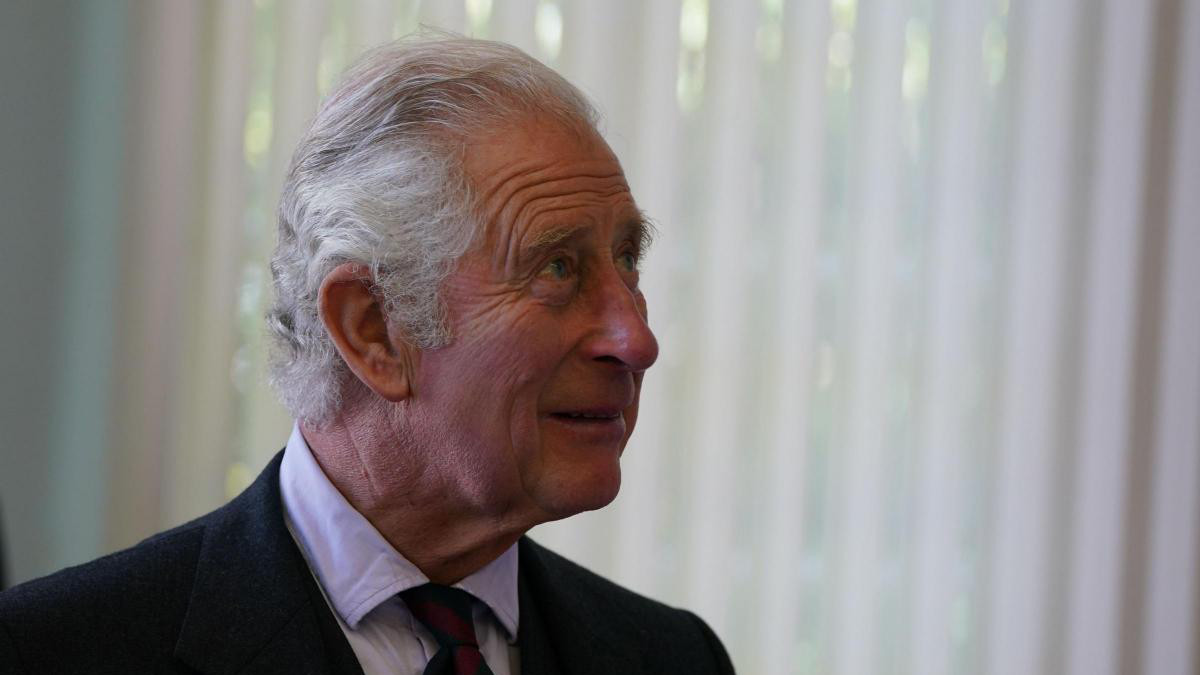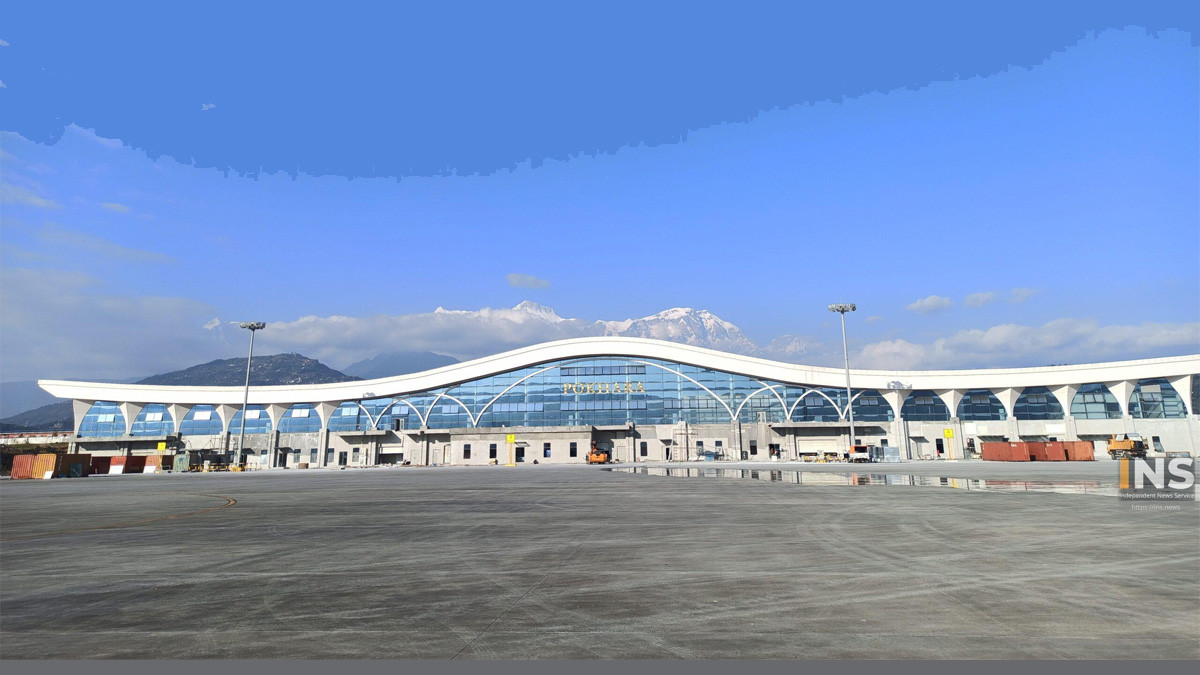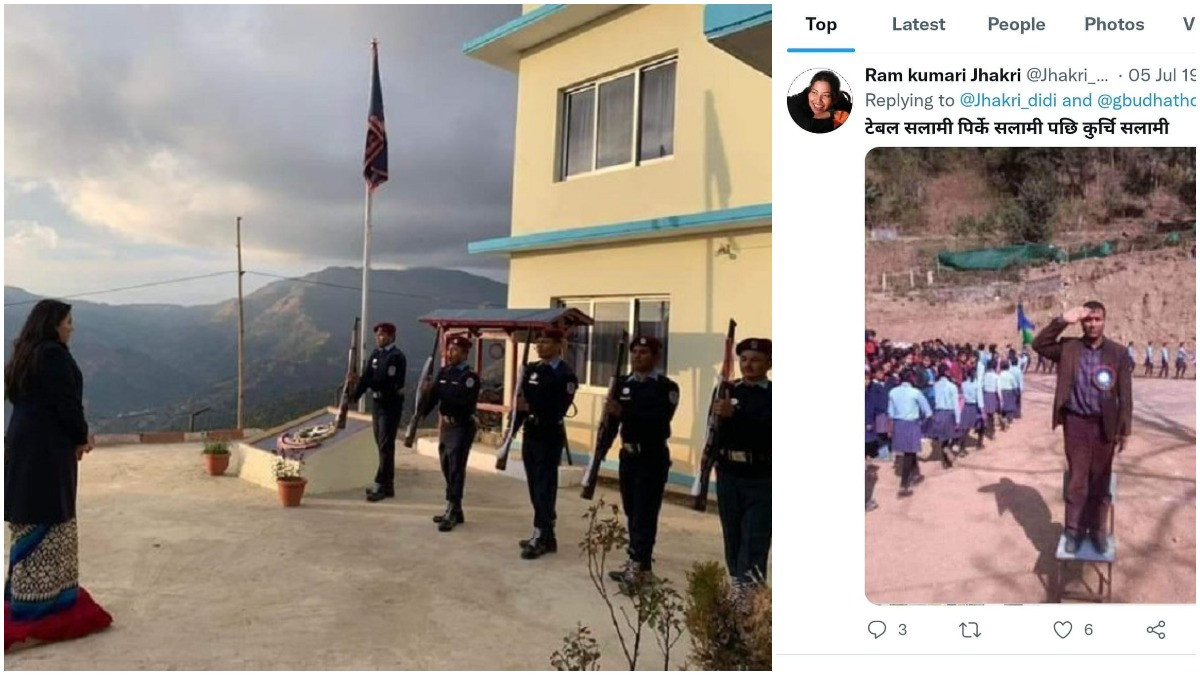
One needs to understand behind curtain play to understand intent behind filing the writ petition, implication of single bench order and its players.
Durga Dulal | Center for Investigative Journalism, Nepal
An important hearing was scheduled for August 27 after appointments made for constitutional bodies courted controversy. Altogether 52 members of the constitutional bodies were appointed by Oli administration since mid-December 2020 but the issue became further complicated after more appointments were made through constitutional council ordinance. Since the issue of constitutional appointments was related to the Constitution, the constitutional bench was supposed to conduct hearings in response to a writ petition filed at the Supreme Court. (Interestingly, the hearing over appointment row was conducted nine months later due to an irrelevant writ petition filed at the apex court.)
Shortly after the hearing commenced advocates questioned chief justice (CJ) Cholendra Shumsher JBR for his alleged involvement in promoting conflict of interests. They argued that since the CJ himself had attended the meetings of the constitutional council, the body responsible for constitutional appointments, he should refrain from conducting the court hearing over the petition filed against constitutional appointments. Later CJ JBR, who skipped the hearing saying that he would consult with other friends, refrained from initial and final hearings. Court administration officially briefed the media about CJ’s decision to skip the hearing over the petition related to constitutional appointments.
The constitutional council ordinance tabled by KP Sharma Oli government, which was swiftly endorsed by President Bidya Devi Bhandari, was widely criticized from all quarters arguing it was against the spirit of the Constitution. As a member of council, CJ JBR had attended the council meeting called as per new ordinance. The meeting made several appointments for constitutional bodies. This courted the controversies wherein CJ JBR was also accused of appointing his trusted persons under quotas allotted for him as part of larger political deal making process. Any bench of the apex court formed without his presence could penalize CJ JBR. For CJ it could be a big moral question to stay in power or appointments could be scrapped as many had been predicting it since August 27.
But the prediction proved wrong. A twist emerged after someone played unexpectedly which eventually made the court hearing over the constitutional appointments uncertain.
On September 1, five days after CJ announced to stay away from hearings on the petition filed against constitutional appointments, two conflicting writ petitions were registered. The petition filed by advocate Ganesh Regmi had argued that CJ shouldn’t refrain from constitutional bench. Bikram Mishra had demanded CJ should continue to share bench. Responding to both the writ petition a single bench of Justice Hari Phuyal on September 3 ordered not to conduct the hearing over the case scheduled at the constitutional bench.
The order also courted criticism. Legal experts including former CJs opposed the order arguing that the single bench ruling to halt the hearing of the constitutional bench was an obstruction to justice.
One needs to understand behind curtain play to understand intent behind filing the writ petition, implication of single bench order and its players.
Dummy Writ Petitioners
So, let’s now check the backgrounds of petitioners Regmi and Mishra to understand the inside drama played to halt justice.
Regmi is a brother-in-law of Ram Krishna Timalsina, former apex court registrar, who was recently appointed as chairman of National Inclusion Commission by Oli administration. Regmi teaches at National Law College, the college established by Timalsina. NIC chief Timalsina may not remain in power if the apex court had termed the constitutional council ordinance “unconstitutional”. A knowledgeable apex court who has been following the constitutional appointment saga says, “Hence, it seems Regmi moved to the apex court as a dummy writ petitioner.”

‘Dummy Applicants’: Ganesh Regmi, Bikas Giri and Ram Maya Lamichhane.
Regmi is a little known law practitioner. Rather he’s a retired police official and was accused of involved in a murder case while working in the force.
While working as district police chief in Rautahat he was accused of being involved in extrajudicial killing. Mohammad Sammas Tarbej, 16, was arrested on December 15 2015, was tortured while protesting in the district. Later, Mohamad, a student, died in police custody. His grandfather, Shekhnur Hasan, moved to Janakpur High Court demanding to register the complaint and probe into extrajudicial killing case. In response to the case, a division bench of Prem Raj Dhakal and Basudev Acharya ordered the authorities to register the complaint and investigate the matter.
Regmi was affiliated with Timalsina’s college after retiring from the police service in early January. Former Supreme Court Registrar Timalsina used to work as an expert at the court’s constitutional bench before getting appointed as NIC chairperson. He was appointed as the chief of the constitutional body at recommendation of CJ JBR. Earlier in December 2020, Rana had recommended him as a NIC member. At that time, Timalsina declined the job offer seeking a higher position.
The writ petition filed at the apex court mentions names of only about two appointees – Timalsina and Prem Kumar Rai, chief of the anti-corruption agency, commission for investigation of abuse of authority. This also shows the writ petition was filed at the behest of Timalsina. It seems Rai’s name was mentioned in the writ petition thinking mere mention of Timalsina would be suspicious.
Asked about intent behind filing such writ petition Regmi says, “It’s not only the case of CJ as he’s not a single personal recommended for appointment. Law applies when the legal arrangement and natural justice system contradict. I filed the writ petition because public position holding persons should not be relieved from constitutional responsibilities.”
One of the reasons behind being suspicious was his background. He was lesser known among the legal fraternity even if he had filed an important writ petition. This shows he’s a dummy writ petitioner. Regmi, however, defended his position and claimed he has no ties with Timalsina. “If you connect dots we all are relatives,” he argues, “This is my fifth PIL. I’m filing the next one soon.”
Another writ petitioner Mishra had demanded that CJ should be refrained from the constitutional bench. In response to his writ petition a single bench of Justice Hari Phuyal just issued show cause notice, making the case of no significance at all.
In appearance it seemed the intent of Regmi’s writ petition is to ease NIC chief Timalsina. But its broader aim seems to serve CJ JBR’s vested interests as well. If this writ wasn’t filed the constitutional bench of the apex court would have been conducting hearings over controversial constitutional council ordinance so far at any cost. Hearing is still uncertain owing to a writ petition filed by advocate Regmi. Further, it has stopped the bench from taking possible legal punishment against CJ JBR. An acknowledged apex court source claims the CJ’s interest was fulfilled through a dummy writ petitioner.
Currently, the hearing has been halted. Nepal Bar Association, an umbrella organization of lawyers, has started nationwide protests announcing bar CJ from entering into the court whereas 19 out of 20 justices have also boycotted hearings of cases other than habeas corpus. After all justices boycotted the hearing, Justice Phuyal reportedly acknowledged his fault regarding an order made by him to halt the hearing process over constitutional appointments. “I’m not responsible for this. I issued the order with the intent of ending the ongoing deadlock but this dragged me towards controversy,” Phuyal reportedly told at a meeting of protesting justices.
Justice Phuyal hinted he was forced to issue the order due to pressure from CJ. Amid protests, CJ on October 30 has returned the writ petition filed by advocate Dipak Bikram Mishra to the constitutional bench.
Strange Writ Petitioners
On May 31 2017, advocate Bikas Giri filed a writ petition at the apex court against senior justice Gopal Parajuli, who was set to become CJ in two months, demanding not to appoint him as judiciary head. Next day, the court set a date for conducting a hearing over the writ petition. As justice Kedar Prasad Chalise was set to conduct the hearing, the writ petitioner didn’t appear before the bench nor were other advocates present there to defend the case from their side. In reality, the writ petitioner Giri went out of contact all of a sudden. He was in Bangkok.
He didn’t appear before the court unless the court scrapped writ petition on June 8. That day, he presented the academic credentials of Parajuli and filed an application seeking to withdraw his writ petition. Based on his application the writ was scrapped paving way for Parajuli to become CJ.
In appearance, it seemed the writ petition was filed against Parajuli but that wasn’t the real story. Instead, the writ petition was filed to clear all possible obstructions and ensure his promotion as CJ. When questions were aroused regarding fake academic credentials of Parajuli the writ petitioner presented his academic certificates saying he got original documents and withdrew writ petition. For Parajuli the petition averted the possible crisis.
Against the claim of writ petitioner Giri, CJ Parajuli was later relieved from the position after the judicial council handed over a letter to him showing that the date of birth mentioned in his academic credentials were fake.
It was also revealed that advocate Giri had headed to Thailand after filing the writ petition. Giri, a member of NBA Kavre branch, also got an opportunity to study in China.
Asked why he went to Thailand after filing a writ petition Giri commented that getting scholarship was a mere coincidence. “I was waiting for media reports to get more revelations regarding the academic credentials of Justice Parajuli. I was in a hurry so I went [to Thailand] to attend the program organized by the World Peace Federation,” he said.
Giri claimed he withdrew writ after failing to collect additional evidence against Justice Parajuli. “Gopal Parajuli didn’t send me to China to pursue a law degree. I had gone there to pursue an LLM degree at the recommendation of the Madan Bhandari Foundation.”
Writ petitioner, who doesn’t remember what was the case
Four days after Lokman Singh Karki was recommended as chief of the anti-corruption agency, CIAA, advocate Om Prakash Aryal on March 20 2013 filed a writ petition against Karki’s recommendation. In the writ petition filed against an all-party agreement made to appoint Karki as CIAA chief Aryal had claimed that Karki wasn’t eligible to get the position as per criteria set by the Constitution.
In response to the writ petition a single bench of Justice Sushila Karki ordered not to execute the decision unless the final verdict was issued. But 37 days later, the interim order was scrapped by a division bench of Justices Girish Chandra Lal and Tarkaraj Bhatta. This paved the way to appoint Karki as CIAA chief.
Consequently, a Cabinet meeting on May 5 recommended Karki as CIAA chief.
Next day, Aryal filed a supplementary petition. But the court administration quashed it. On May 8, president Ram Baran Yadav appointed Karki to the position and swiftly administered the oath of office at the president’s office. On May 10, when advocate Aryal moved to the bench taking yet another writ petition the court ordered to file the writ petition. Two days later, his writ petition was filed.
Responding to the writ petition a division bench of Justices Gopal Parajuli and Om Prakash Mishra on September 24 scrapped the writ petition.
Advocate Aryal repeatedly inquired with the court administration about the full text but he always gets a standard reply, “full text is not yet ready.”
Aryal was surprised when Rammaya Lamichhane on June 19 2015 moved to the apex court with a review petition. Lesser known Rammaya was nobody in the legal field. Yet, full text is mandatory while filing the review petition. Since the first right of review petition lies on writ petitioner court administration called Aryal. Then, the administration called Rammaya too. The review petition was rejected after Aryal replied he himself would work for the review petition.
“When I used to repeatedly ask the court administration to provide full text they always replied to me that the verdict was not prepared,” says Aryal adding, “But how come an irrelevant person can file a review petition by obtaining the document not given to me. I was surprised to see all this before my eyes. Since I myself wanted to file a review petition her application was rejected. It seems her review petition was prepared with the hidden interest of dismissing this case.”
The issue was so important that later the apex court later removed Lokman from position citing his ineligibility to take the charge of the constitutional body due to lack of working experience as stated in the Constitution . If Rammaya was successful in filing a review petition perhaps Lokman might not be removed from top anti-corruption agency.
This all was happening at the court when Ram Kumar Prasad Sah was chief justice. His daughter Renu Kumari Sah, who was retiring on July 23 2015 was working at the CIAA as its legal advisor. Later, it was revealed that Rammaya had moved to the court only after consultation among Renu Kumari, who is now high court justice, Lokman and Rammaya. They had intended to resolve the saga by issuing a verdict declaring Lokman appointment issue can’t be reviewed at the court. But Aryal noticed it on time and their ploy to retain Lokman unlawfully was foiled.
After this saga, Rommaya was known as a ‘dummy writ petitioner’.
Rommaya was well connected with Lokman. Her daughter was appointed as contractor worker at the CIAA whereas CJ Sah’s daughter was appointed legal advisor of the anti-corruption agency after Lokman appointed CIAA chief. The review petition was filed with the intent of resolving the case permanently before CJ Sah retires.
Interestingly, informed court sources say former Registrar Timalsina himself drafted the review petition. The logic behind his involvement of Timalsina in drafting the petition is that the phrase–How Not To Interpret Constitution—the phrase often he uses was included in the petition.
Timalsina has ties with Rammaya as well. She was also affiliated with NIC chief Timalsina’s law college. Asked about her affiliation with college she confirmed she had worked for college earlier.
Asked about her intent in filing a review petition in the Lokman case she declined to comment in detail. “How can I remember all those past issues as I have defended so many cases? I cannot remember everything and timing,” she says.
Court order ‘to blacklist dummy writ petitioners’ remains unimplemented
Aforementioned anecdotes of dummy writ petitioners are just a few among many others. The court administration often receives this sort of petitions. Of them most are quashed by court administration immediately whereas some make it to the hearing process.
It’s hard to figure out how many of PIL were filed with ‘good intent’. Court cannot block some of the PIL as a few of them are produced at the behest of justices.
For the apex court administration issue of dummy writ petitioners is not a new issue. Considering its implications in judiciary about a decade ago and analyzing 17 PILs, a bench of justices Kalyan Shrestha, Sushila Karki and Girish Chandra Lal had ordered to blacklist law practitioner from filing PIL in case they are found filing unrelated petitions or ignoring the petition after filing them.
Till date, none has been blacklisted.
The court had also clarified some issues regarding what PIL is and what PIL is not. In 1990, advocate Radheshyam Adhikari had filed a writ petition against the then His Majesty of Government regarding the appointment of Kalyan Bikram Adhikari as a Nepali ambassador to Japan. Responding to the writ petition a bench of the apex court comprising chief justice Bishwonath Upadhyay and justices Surendra Prasad Singh and Gajendra Keshari Bastola had defined limitation of public concern, personal ties and intellectual romanticism.
“Public rights or concerns mean interests of people across the country or the community, not row over vested interests or concern of certain people. To issue is a matter of public interest or concern or personal interests or it is related to general public or community should be defined as per concern or interest of public or personal,” states the apex court explanation issued on March 21 1992.
Senior advocate Badri Bahadur Karki says PIL is largely misused in recent days because of personal benefits, publicity and corporate driven conflict of interests. “That’s not the spirit of public interests litigation,” he says.
Baburam Dahal, spokesperson at the Supreme Court admits efforts made to manage public interests litigations have not been successful. He said they had tried to focus on writing petitioners on specific issues but without success.
Misuse of PIL to serve corporate interests
On May 17, advocate Srijana Adhikari filed a writ petition against the government instruction given to business people to clear tax settlement within 30 days of lifting nationwide lockdowns. Advocate Adhikari had moved to the court insisting that the government ‘should not force for tax clearance’ in the face of lockdowns.
Two days after the writ was filed a single bench of Justice Mira Khadka ordered the government not to collect taxes. Citing the same court order, the private sector refused to settle taxes. Consequently, revenue generation declined significantly in state coffers. As only the corporate houses benefited because of this order both the Finance Ministry and Inland Revenue Office on May 29 had to move to the court to vacate the previous court order. Responding to the vacate petition a division bench of justices Ananda Mohan Bhattarai and Nahakul Subedi scrapped the court’s earlier order on taxes. This order paved the way to the government for tax collection.
There are some examples of courts also supporting corporate interests once a business interest driven PIL is filed at the court. For example, former secretary Dwarikanath Dhungel and former auditor general Sukdev Khatri on January 28 2018 filed a writ petition after it was revealed that Ncell, a private telecommunication company, was found avoiding capital gains tax. In response to writ petition, a full bench comprising chief justice Cholendra Shumsher JBR and justices Mira Khadka, Bishambhar Shrestha, Ananda Mohan Bhattarai and Tanka Mokta on February 6 2018 ordered the telecommunication company to pay tax.
The tax saga doesn’t end here. In April 2019, NCell challenged the court verdict. A division bench of justices comprising Sapana Pradhan Malla and Prakash Kumar Dhungana ordered to forward the case towards full bench ‘stressing on the need of constitutional explanation’. The case already settled by the full bench was sent to court for another round of hearing. Finally, an extended full bench apex court comprising justices Tej Bahadur KC, Purushottam Bhandari, Dambar Bahadur Shahi, Sushmalata Mathema and Manoj Sharma ordered in line to reduce taxes for Ncell. This is considered as one of the most controversial apex court verdicts.
Court spends most time to handle PIL
Senior advocate Badri Bahadur Karki also thinks the PIL is misused for wrong intent. “PIL has some importance as it was envisioned to ensure justice for voiceless people. But several wrongdoings are happening in the name of PIL,” said Karki.
Some good precedents are set in India and Nepal because of PIL. But Karki thinks PIL has become a tool to serve the interests of corporate houses and law practitioners are taking it as a tool of public stunt in recent days.
Apex court spokesperson Dahal says PILs are killing most of the court time. Last year, 3,000 PIL were registered at the apex court. Dahal estimates the number of PIL registered at the apex wouldn’t reduce this year as well. Even as some efforts were made to manage PIL, court spokesperson Dahal says, “Court is spending most of its working days handling PILs.”
‘PIL largely misused, become a matter of public stunt’

Balram KC, former supreme court justice.
Practice of filing writs on issues of public concerns or PIL started from India. An advocate had moved to the supreme court to file a writ petition regarding transfer of justice in 1982. The court questioned the concern of the general public about the issue. To resolve this issue a five-member bench committee headed by the then chief of justice of India was formed. The advocate replied, “Who else will be concerned if lawyers are not?” Later, the trend of filing writ petitions on public interest issues moved forward.
Since the Article 88 (2) of Constitution of the Kingdom of Nepal-1990 had the provision of PIL such cases were filed. Its intent was to ensure justice for poor, uneducated and suppressed people. Their access to justice is difficult and their voices remain unheard. Supporting helpless people’s access to justice is the spirit of the constitution. But PILs are filed for public stunt and writ petitioners vested interests are also reflected in doing so. Now, PIL is largely misused, it has become a matter of public interest.
In India, Delhi High Court recently fined Bollywood actress Juhi Chawla IRs 2 million for wasting court time by filing a PIL. The court had fined her when she moved to the court demanding to suspend 5G mobile service arguing it causes cancer.
We need PIL. But what type of PIL we need? I think it’s high time to discuss about it. I have a sad experience about PIL.
While conducting a hearing over a PIL at the apex court I asked a writ petitioner to provide original writ. He failed to give me the original text. Then, I asked him to appear before the bench only after full preparation. The writ petitioner later committed suicide.
In India, PILs are registered and hearing is conducted only after a thorough study. It’s really difficult to register a PIL at the Indian High Courts. In Nepal, one can feel there are so many cases of misusing PIL. In our case it seems PIL is Personal Interest Litigation, not Public Interest. Some people have started to term it corporate interest as well. Personally, I think PIL is being used as a publicity stunt.
(This news is written by Durga Dulal for the Center for Investigative Journalism (CIJ-N). Copied from the official web site https://cijnepal.org.np by Epardafas.com. Details other than the headline of the news are kept correct. )

 CIJ-NEPAL
CIJ-NEPAL